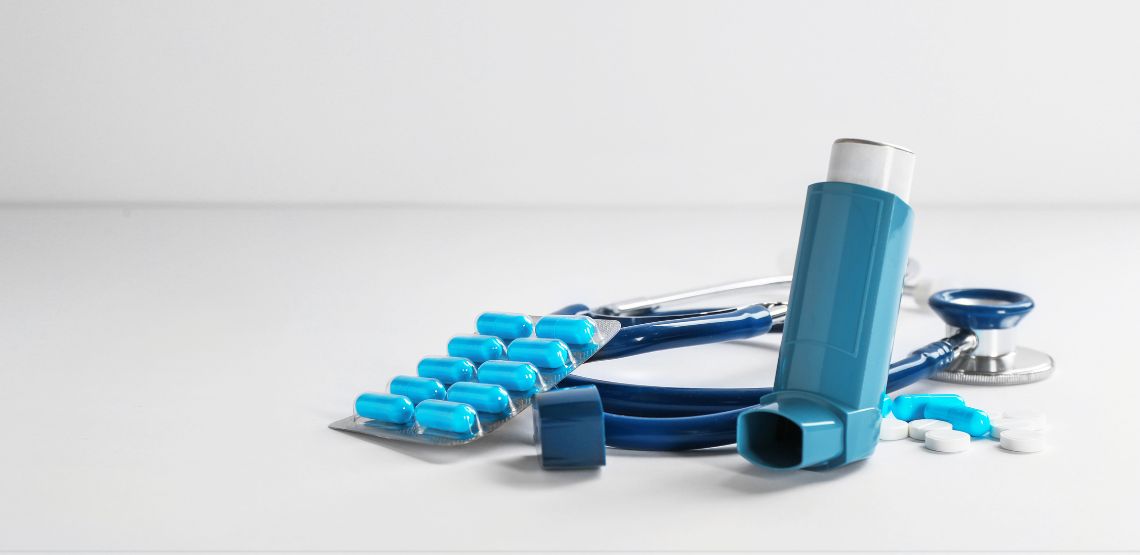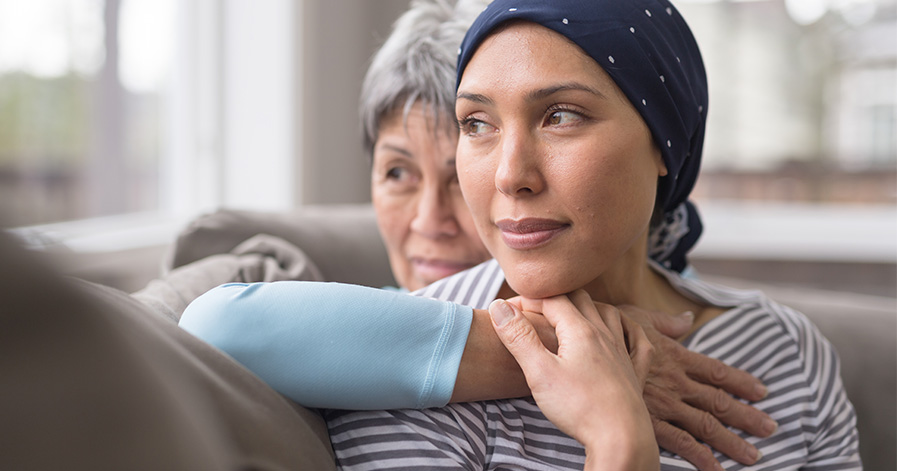Common COPD Symptoms & Treatment Options
Recognizing both common and lesser-known symptoms of COPD is crucial for early diagnosis and effective treatment.
Common Signs of COPD
1. Chronic Cough
A chronic cough that lasts for months or even years is one of the most frequent and noticeable signs of COPD. Often referred to as a "smoker's cough," this persistent cough usually produces mucus and may worsen in the morning. The cough is the body’s way of trying to clear the lungs of irritants, such as smoke or pollutants.
2. Shortness of Breath (Dyspnea)
Breathlessness is a hallmark symptom of COPD, particularly during physical activities like walking, climbing stairs or light exercise. Initially, the shortness of breath may occur only during exertion, but as the disease progresses, it can happen even during daily activities or while at rest.
3. Excess Mucus Production
COPD is commonly associated with overproduction of mucus in the lungs, which can be clear, white, yellow or green. This excessive mucus results from inflammation and irritation in the airways, and the body tries to expel it through frequent coughing.
4. Wheezing
Wheezing, a high-pitched whistling sound when exhaling, is a common symptom of COPD and is often associated with obstructed airflow. Wheezing can also be a sign of other respiratory conditions like asthma, but its presence in COPD patients indicates a restriction in the airways.
5. Fatigue
Constantly feeling tired or fatigued is another common sign of COPD, even if you're getting enough rest. The extra effort required to breathe puts a strain on the body, which depletes energy and leaves individuals feeling exhausted. Fatigue can also be exacerbated by reduced oxygen levels in the blood.
Related Search Topics (Ads)
Lesser-Known Signs of COPD
1. Swelling in the Ankles, Feet, or Legs
Peripheral edema, or swelling in the lower extremities, is a lesser-known sign of COPD, particularly in advanced stages. The strain on the heart from trying to pump oxygen through damaged lungs can cause fluid to accumulate in the ankles, feet or legs. This symptom may be mistaken for a heart issue, but it’s often linked to COPD complications.
2. Frequent Respiratory Infections
People with COPD are more prone to respiratory infections such as bronchitis and pneumonia. The damage to the lungs and the excess mucus provide an environment for bacteria and viruses to thrive. Frequent infections not only worsen COPD symptoms but can also cause flare-ups, or exacerbations, that further damage the lungs.
3. Unintended Weight Loss
In more advanced cases of COPD, some individuals experience unintended weight loss. This is due to the increased energy expenditure required for breathing, as well as a loss of appetite, which often accompanies severe COPD. Difficulty breathing while eating or feeling full quickly can also contribute to weight loss.
4. Cyanosis
Cyanosis is a bluish tint to the lips, fingernails or skin that occurs when the blood oxygen levels are too low. This lesser-known symptom indicates that the body is not receiving adequate oxygen, and it’s a serious sign that COPD has progressed to a more severe stage.
5. Morning Headaches
Morning headaches can occur in people with advanced COPD due to a buildup of carbon dioxide in the blood overnight. When lung function is severely impaired, the body struggles to get rid of carbon dioxide, which can cause headaches upon waking.
6. Difficulty Sleeping
Many individuals with COPD find it difficult to sleep, particularly when lying flat. Breathlessness and coughing can make it hard to get comfortable at night, and frequent waking is common. As a result, people with COPD often experience poor sleep quality, which can worsen fatigue during the day.
7. Depression and Anxiety
Living with a chronic illness like COPD can take a toll on mental health. People with COPD often report feelings of depression and anxiety, especially as symptoms progress and limit their ability to engage in daily activities. The fear of shortness of breath and exacerbations can also heighten anxiety levels.
COPD Treatment Options
There is no cure for COPD, but early diagnosis and appropriate treatment can help manage symptoms and slow the disease’s progression.
1. Medications
Several types of medications are commonly prescribed for COPD to help alleviate symptoms and reduce the frequency of flare-ups. Bronchodilators, which relax the muscles around the airways, are often the first line of treatment. These can be taken through inhalers or nebulizers, depending on the severity of symptoms. Long-acting bronchodilators provide continuous relief, while short-acting ones are used for quick relief during an exacerbation.
2. Combination Inhalers
For individuals with more severe symptoms, combination inhalers that contain both bronchodilators and corticosteroids may be prescribed. These help to reduce inflammation in the airways, prevent exacerbations and improve lung function. However, long-term use of corticosteroids can have side effects, so they are generally prescribed for those who need additional symptom management.
3. Oxygen Therapy
Oxygen therapy is a treatment option for individuals with low blood oxygen levels, particularly during physical activity or sleep. Oxygen can be delivered via portable tanks or oxygen concentrators, allowing people with COPD to maintain higher oxygen levels and reduce the risk of complications such as cyanosis or heart strain.
4. Pulmonary Rehabilitation Programs
Pulmonary rehabilitation is a personalized treatment program that combines exercise, education, and support for individuals with COPD. These programs help patients improve their physical endurance, reduce symptoms, and learn techniques for managing breathlessness. Rehabilitation can be an excellent way to improve overall quality of life and maintain mobility.
5. Vaccinations
People with COPD are at a higher risk of respiratory infections, which can exacerbate symptoms. Therefore, staying up to date with vaccinations, such as the flu shot and pneumonia vaccine, is crucial for preventing infections that could worsen COPD.
6. Surgical Options
In severe cases of COPD, surgery may be recommended. Options include lung volume reduction surgery, which removes damaged lung tissue, or a lung transplant for those with end-stage COPD. Surgery is typically considered only after all other treatments have been exhausted.
Final Notes
COPD is a serious condition that requires ongoing management and care. Recognizing both the common and lesser-known signs can help individuals seek an early diagnosis and start appropriate treatment. Whether through medications, lifestyle changes, or pulmonary rehabilitation, the right combination of treatments can help improve quality of life and slow the progression of COPD. If you suspect you or a loved one may have COPD, consult with a healthcare provider to develop a personalized treatment plan that works best for your unique needs.


